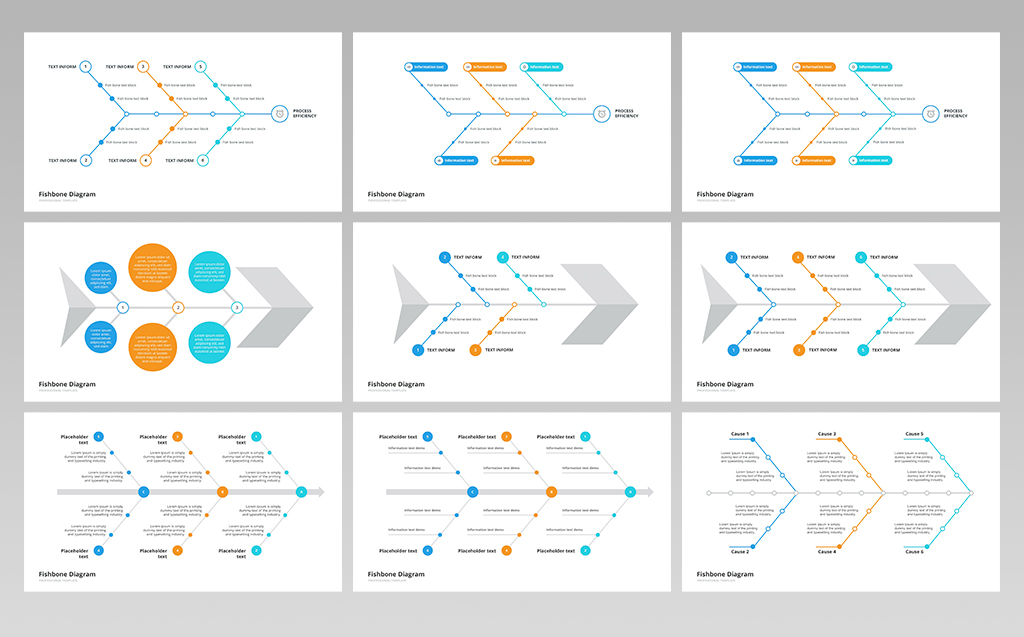

The user must make them fit the problem at hand. The Best Ishikawa Template PPT Slide includes a simple fishbone diagram with twelve nodes. Remember: There is no perfect set or number of categories of causes. In both types of processes, environment (buildings, logistics, and space) and measurement (calibration and data collection) are also frequently used. Machines (equipment) methods (how work is done) materials (components or raw materials) people (the human element) Service Process policies (Higher level decision rules) procedures (steps in a task) plant (equipment and space) people Cause Cause Effect Cause CauseĨ Major types of causes Production Process Service Process Connect them to the “backbone” of the fishbone chart. Draw major cause categories or steps in the production or service process. Place the problem statement in a box on the right hand side of the writing surface. Choose one method: brainstorming check sheets based on data collected by team members before the meetingħ How do I do it? contd. Generate the causes needed to build a Cause & Effect Diagram.

This builds support for the resulting solutions Focuses the team on causes, not symptomsĦ How do I do it? 1. It is referred to as Ishikawa diagram due to its originator or as a fish-bone diagram because of its structure.Ĥ Why use it? Cause-and-effect diagrams are indispensable tools in allowing a team to identify, explore, and graphically display, in increasing detail, all of the possible causes related to a problem or condition to discover its root cause(s).ĥ What does it do? Enables teams to focus on the content of the problem, not on the history of the problem or differing personal interests of team members Creates a snapshot of the collective knowledge and consensus of a team around a problem. The cause-and-effect diagram was introduced in Japan by Kaoru Ishikawa. The cause-and-effect diagram is an important tool in this task it assists the generation of ideas for problem causes and, in turn, serves as a basis for solution finding.ģ Preview, contd. The goal of problem solving is to identify the causes of problems in order to correct them. Ömer Yağız Department of Business Administration Eastern Mediterranean University TRNC 1Ģ Preview Variation in process output and other quality problems can occur for a variety of reasons, such as materials, machines, methods, people, and measurement. 1 CAUSE & EFFECT DIAGRAM (Fishbone or Ishikawa Diagram) DrĬAUSE & EFFECT DIAGRAM (Fishbone or Ishikawa Diagram) Dr.


 0 kommentar(er)
0 kommentar(er)
